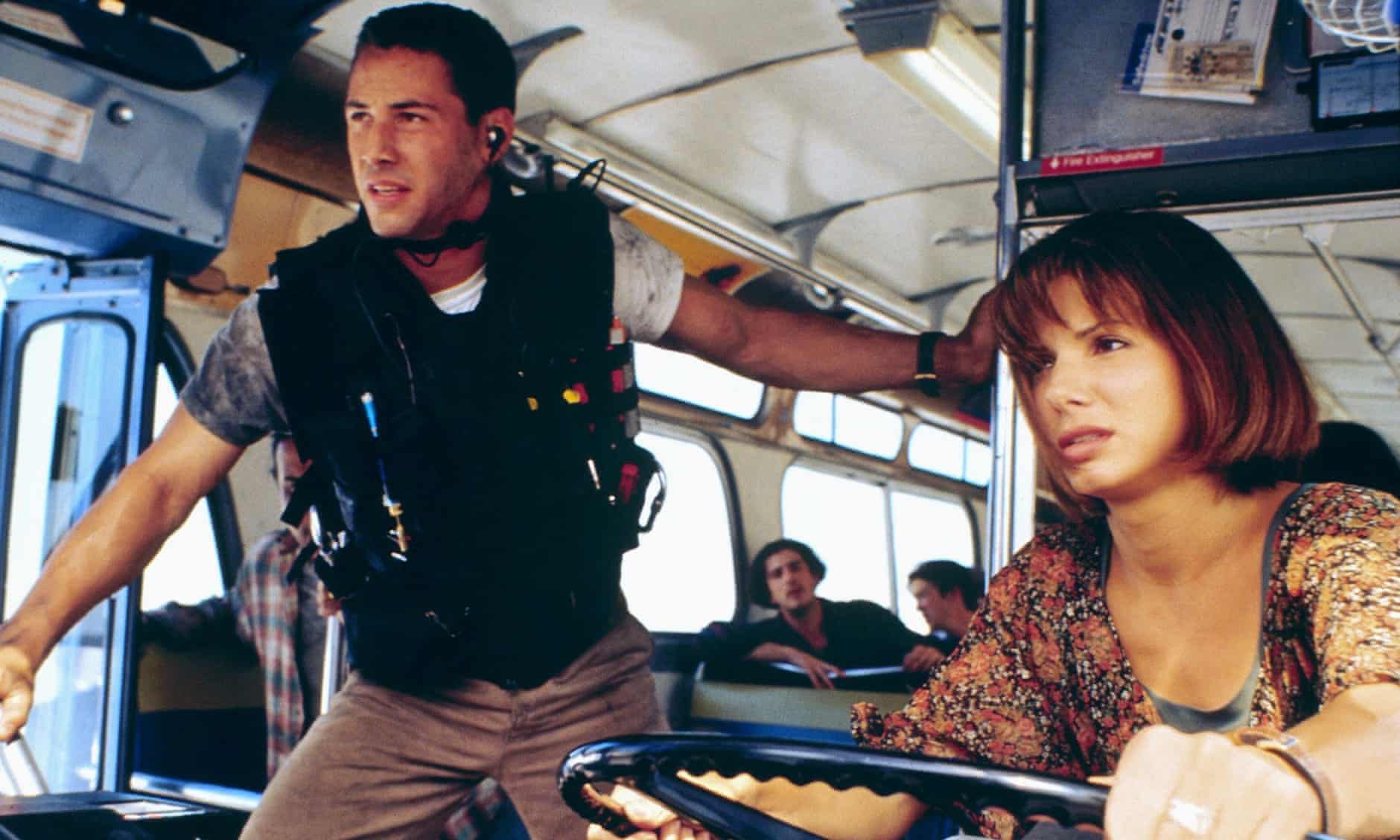Keanu Reeves and Sandra Bullock’s high-octane bus thriller “Speed” serves as a nostalgic reminder of a time when entertainment focused more on substance than excess. In an era where entertainment often feels bloated in budget, length, content, and discourse, revisiting the summer of 1994 with the concise and exceptional “Speed” offers a refreshing break, perfectly suited for today’s cluttered media landscape.
Directed by Dutch cinematographer Jan de Bont, this pulse-pounding action film remains refreshingly straightforward and direct after 30 years, avoiding any new symbolic interpretations and standing out sharply against Hollywood’s current troubled state. This summer has seen box office struggles with high-stakes movies like “The Fall Guy” and “Furiosa” faltering, while streaming viewers are left with subpar options like “Atlas,” a widely viewed but critically panned Netflix disaster. The film industry is facing a crisis of movie star power, with too few compelling A-listers under 50 drawing crowds, and those who do often fail to deliver convincing performances, as seen in “Anyone But You.”
Action films have declined in quality, relying too heavily on digital effects rather than practical stunts, and even high-budget productions lack the authentic feel of real film. The industry’s fear has led to an increase in reboots, remakes, and legacy sequels that lack originality, resembling cinematic zombies rather than fresh human creativity. Against this backdrop, “Speed” stands out as an original action thriller with a tight plot and reasonable budget, led by two genuine movie star performances—one from an established star and another rising—filled with action that’s engaging and thrilling, making it an even greater gem now than it was at its release.
The plot of “Speed” centered on a clever concept—a villain rigs a bomb on a Los Angeles bus that will explode if its speed drops below 50 mph. Emerging in the post-“Die Hard” era, this was a time when action movies began to be self-referential, following a decade dominated by Stallone and Schwarzenegger.
Just a year after Schwarzenegger’s “Last Action Hero” poked fun at the genre, Graham Yost’s original script for “Speed” was set in a single location and was paired with “Die Hard” director John McTiernan, featuring another cheeky protagonist who flouted rules. However, this comparison became a hindrance, and “Speed” evolved into something more distinctive. The story expanded beyond the confines of the bus with two major sequences framing the narrative.
Keanu Reeves was cast as Jack, an unconventional choice known more for his laid-back surfer or slacker roles (he promptly hit the gym for two months and cut his hair short). Additionally, Joss Whedon was brought in just one week before filming began to refine the script, removing forced quips and significantly altering the dialogue, to the extent that even Yost acknowledged Whedon’s substantial contribution to the final film.
Whedon brought a lively energy to the film without being overly self-satisfied. Reeves played his character with sincerity, showing skill and determination, and the film featured genuine risks and outcomes, making the improbable action scenes more engaging.
The opening scene quickly set a serious tone, focusing on the task with little distraction, creating a fast-paced yet complete film. De Bont directed the action scenes with precision, distinguishing himself in modern action cinema, while Yost and Whedon developed characters through their reactions to action rather than through awkward exposition.
We understand the characters by their actions in crises, particularly Jack, who uses intellect over physical strength, offering a fresh take compared to previous films. The initial conflict between Jack and Hopper’s character establishes a straightforward yet captivating dynamic.
The main sequence feels like a disaster film, with a diverse group of characters confined together, heightened by Mancina’s memorable score. Bullock’s Annie becomes an impromptu stunt driver, and her subtle romantic tension with Jack works due to their natural rapport. Bullock’s relatable charm wins us over, making her performance in intense situations believable. Their eventual kiss comes at a moment that feels earned after the relentless pace of the movie.
